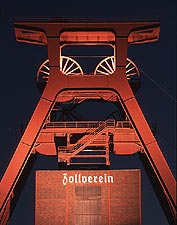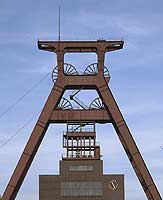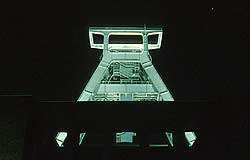|
Zollverein XII
The most important work of Schupp and Kremmer is beyond any doubt the design of the coal mining plant of Zollverein XII. It has been constructed during the late 1920s and early 1930s and has been regarded since the as the "most beautiful and largest coal mining plant of the world". When the site was finished it was the most modern coal mining plant both from a technical and from an arts point of view - it overcame the technical standards of a coal mining plant of that age as well as it did overcome all the architectural considerations of such an industrial installation.
It did not only quadruple the hitherto known benchmark of a mining shaft getting 3,000 tons of coal to the surface per day - it pushed the Jugendstily style of architecture aside and introduced a new, cubistic style which as well gave and still gives the visitor a vision of a medieval chateau with the winding tower atop of a large place behind the entrance of the mining site.
The utmost importance of the Zollverein XII mining site and the accompanied Zollverein 1/2 mining site and the Zollverein cokery to the world's industrial architecture and technology has been recognised in December 2001 by the UNESCO by awarding this site the status of a world heritage site.
| 

